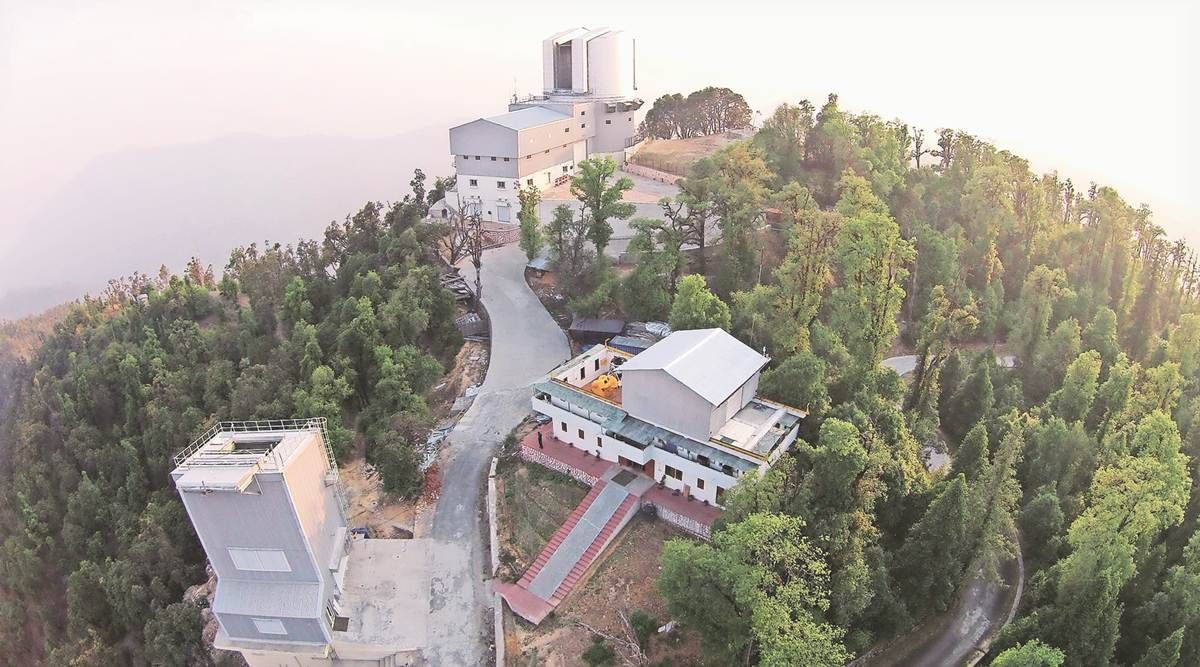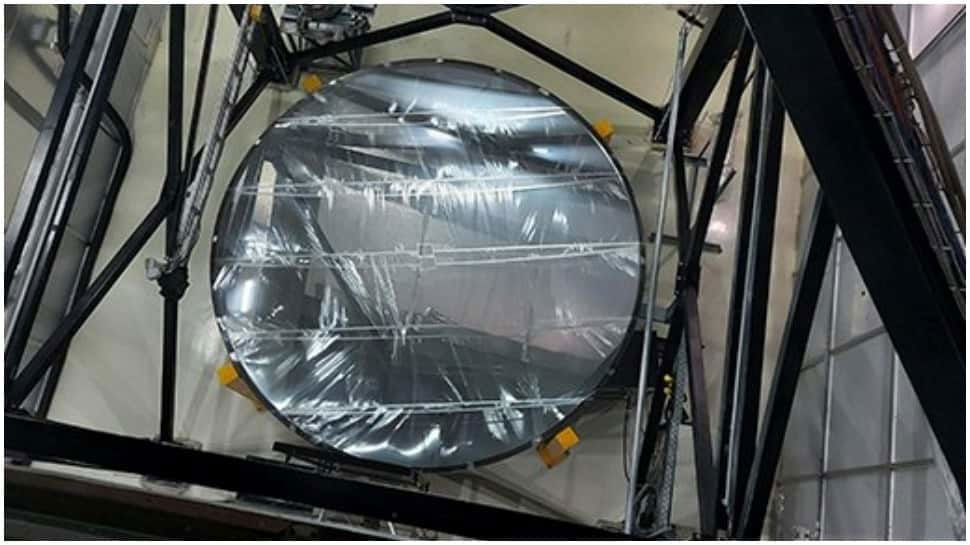In early 2022, India’s first liquid-mirror telescope saw its first light as it stared into the zenith from the Devasthal observatory in Uttarakhand, where it would examine asteroids, supernovae, space junk, and all other celestial objects at a height of 2,450 metres in the Himalayas.

It became the world’s first liquid-mirror telescope to be commissioned for astronomy after entering the commissioning phase. The Indian Express describes what a telescope is, how it differs from a standard telescope, and how it might be used.
The International Liquid-Mirror Telescope (ILMT) has been built on the Devasthal Observatory site in Uttarakhand, which is owned by the Aryabhatta Research Institute of Observational Sciences (ARIES).
It’s the only one created for astronomy study and the only one of its kind to be operational anyplace in the globe, and it’s located at 2,450 metres above mean sea level.
The few liquid-telescopes that have been created in the past have either monitored satellites or been used for military objectives. The ILMT will be the third telescope facility to be built at Devasthal, which is one of the world’s most pristine locations for astronomical studies. With full-scale scientific operations slated to begin in October this year, the ILMT will collaborate with the 3.6-metre Devasthal Optical Telescope (DOT), India’s biggest telescope (of the 4-metre class). The 1.3-metre Devasthal Fast Optical Telescope (DFOT), which was inaugurated in 2010, is also on site.
For observations, a traditional telescope is guided to aim towards the astronomical source of interest in the sky. Liquid-mirror telescopes, on the other hand, are fixed telescopes that picture a strip of sky that is at the zenith at a specific time of night. A liquid-mirror telescope, in other words, will survey and catch any and all celestial objects, including stars, galaxies, supernovae explosions, asteroids, and space junk.
On selected evenings, highly polished glass mirrors — either single or a combination of curved ones — are guided in a controlled manner to concentrate on the targetted celestial object in conventional telescopes. After then, the light is reflected to produce pictures.
The liquid-telescope, on the other hand, is made up of mirrors with a reflective liquid, in this case, mercury — a metal with a high light-reflecting capacity, as the name suggests. A container containing around 50 litres (700kg) of mercury will be spun at a steady pace along the ILMT’s vertical axis. The mercury will spread as a thin layer in the container throughout this process, generating a paraboloid-shaped reflecting surface that will now serve as the mirror. A surface like this is perfect for collecting and focusing light. The mirror is 4 metres in diameter.
Another distinction between the two is the length of time they are in operation. ILMT will capture the sky’s images on all nights — between two successive twilights — for the next five years, beginning in October 2022, while conventional telescopes observe specific stellar sources for fixed hours as per the study requirement and time allotted by the respective telescope time allotment committee.
Between June and August, the ILMT will be closed for operations to preserve it from moisture during the monsoon.
The key nations that have worked to establish the ILMT are India, Belgium, Canada, Poland, and Uzbekistan. The Advanced Mechanical and Optical Systems Corporation and the Centre Spatial de Liège in Belgium developed and built the telescope.

